Freshwater X Architecture

The Earth’s surface is 70% covered with water (WFF, 2021). That makes one think: why do we face water scarcity? The oceans, the lifeblood of Earth, are salty, not drinkable and signify 97.5% of this water supply. Globally, the Earth depends on only 2.5% fresh water. The majority of this fresh water (68.7%) is frozen in ice or permafrost. The world’s water is in figure 1 on the side categorised in various entities (UNEP, 2015).
Rockstrom et al. (2009) identified in the concept of planetary boundaries nine key earth system process. The planetary boundaries have unfortunately limits for the anthropogenic world. The Anthropocene is defined as the most recent period in the earth’s history which humans have effect on the earth’s environment and climate. Natural forces and human forces became intertwined (Cambridge Dictionary, 2021). Aim of the present research was to analyse the interferences between fresh water and its environmental problems and characteristics of the architecture industry. A systematic literature research is executed to interlink architecture to the fresh water earth system process of the planetary boundaries. Google Scholar and other publications gave insights and facts for this research. Multiple studies have been reviewed.
Figure 1: The World’s Water
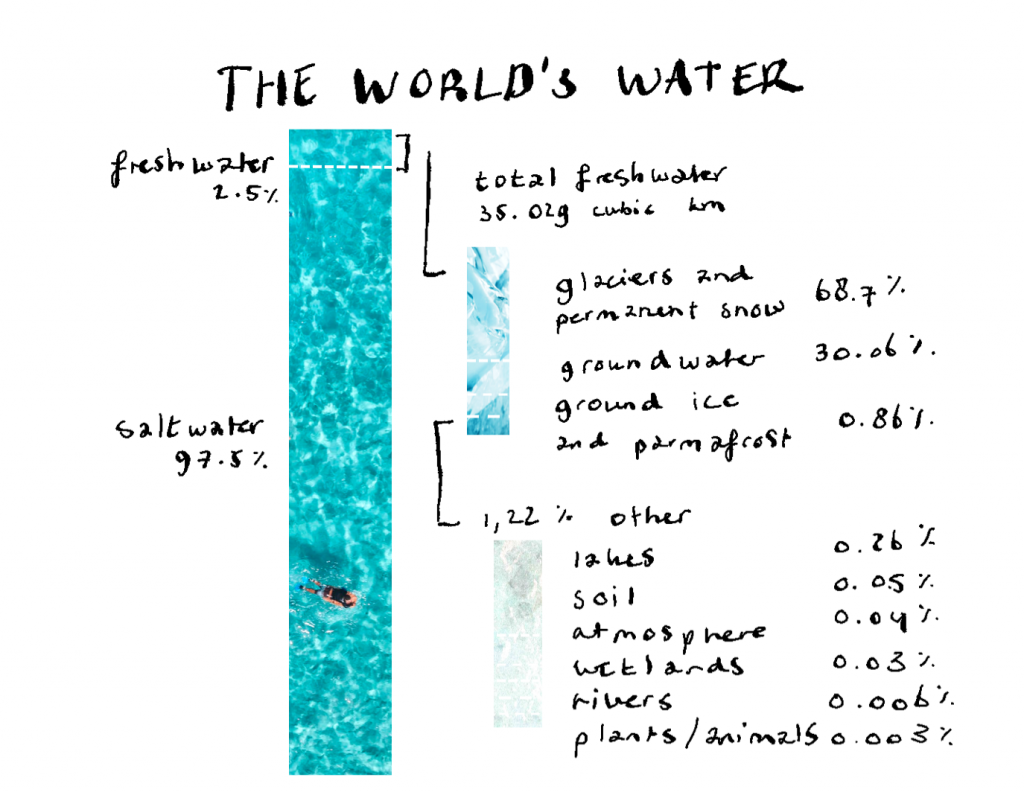
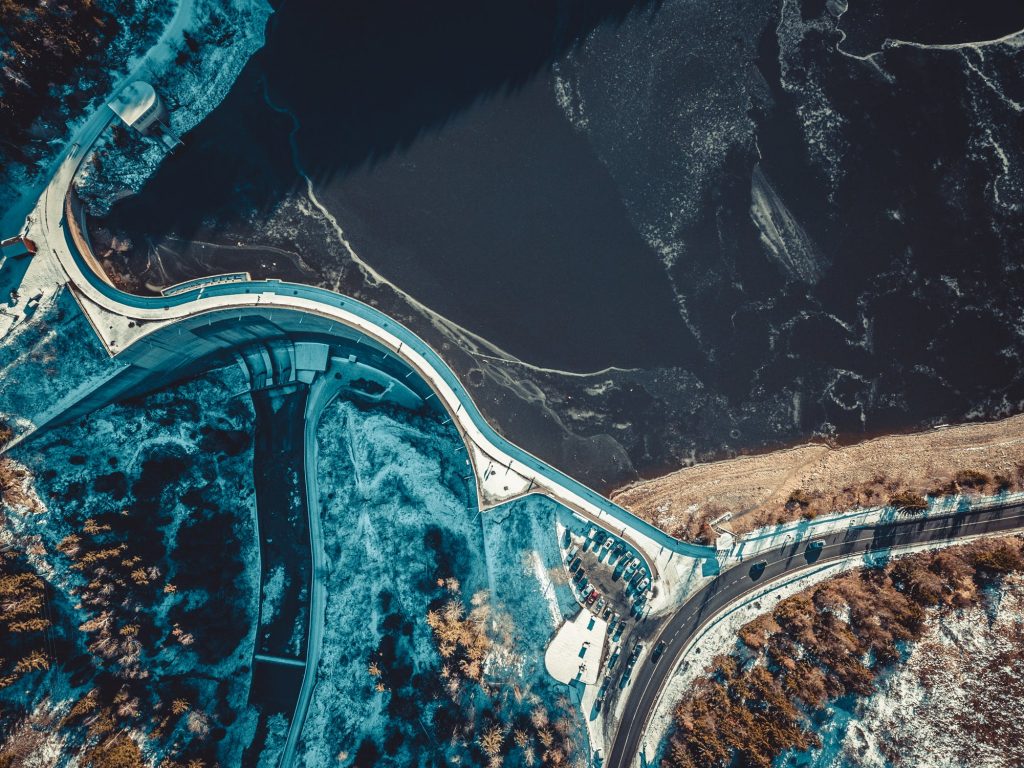
Fresh water is shared between society and ecosystems. The massive agricultural and industrial practices, partly irreversible, have led to extremely environmental damage and socioeconomic risks (UNESCO, 2019). By 2030, the United Nations set a goal to increase water-use efficiency across all sectors and promotes sustainable management practices to eventually address water scarcity in the world. Moreover, the planetary boundary of fresh water is cross-linked to the Sustainable Development Goal 15.1 “by 2020, ensure the conservation, restoration and sustainable use of terrestrial and inland freshwater ecosystems and their services, in particular forest, wetlands, mountains and drylands” (UN, 2015).
Earth’s natural waterways are disturbed by human population (WFF, 2021). Growth and thrive of civilisation provoke building dams, water wells, vast irrigation systems, and other contractions. Water systems are increasingly disordered and some rivers, lakes and aquifers are drying up. The concerning climate change causes drought and desertification. “2.3 billion people live in water-stressed countries, of which 733 million live in high and critically water-stressed countries”, states the. UN-Water (2021). Welcome to the Anthropocene!
The water usage globally is slightly different between developed and underdeveloped countries. Experts states that the growing water scarcity could increase the segregation between the rich and the poor. Events as crop failure, power shortage and mass migration could even cause to more water anxiety. 1.4 billion people, including 450 million children, on earth live in areas with extremely high-water vulnerability and have not access to drinkable water (UNICEF, 2021).
The remaining population of the world, 6.5 billion, has access to clean water facilities. The forecast of the world population is estimated to reach between 9.4 billion and 10.2 billion people, two in three people living in urban areas (Guardian, 2021). With the rising population, between 4.8 billion and 5.7 billion people will live in water-stress areas that have yearly one month of water-scarce. The risk of floods is currently 1.2 billion and will rise to 1.6 billion by 2050.
A comparison of the global water usage is made in the pie chart below (figure 2). The UNEP divided the charts into domestic, industrial and agricultural use per low, mid or high-income countries. The majority (65%) of water use goes to agricultural practices, 21% is used in industry and 14% goes to households. Remarkable is the 5% higher water usage in low- and mid-income countries. In high income countries are the domestic and industrial water usage average 3% higher than low- and mid-income countries. 80 % of the water what is used is discharged without treatment back in nature.

Figure 2: UNEP Global Environment Outlook 3, “Freshwater” www.grida.no/geo/geo3/
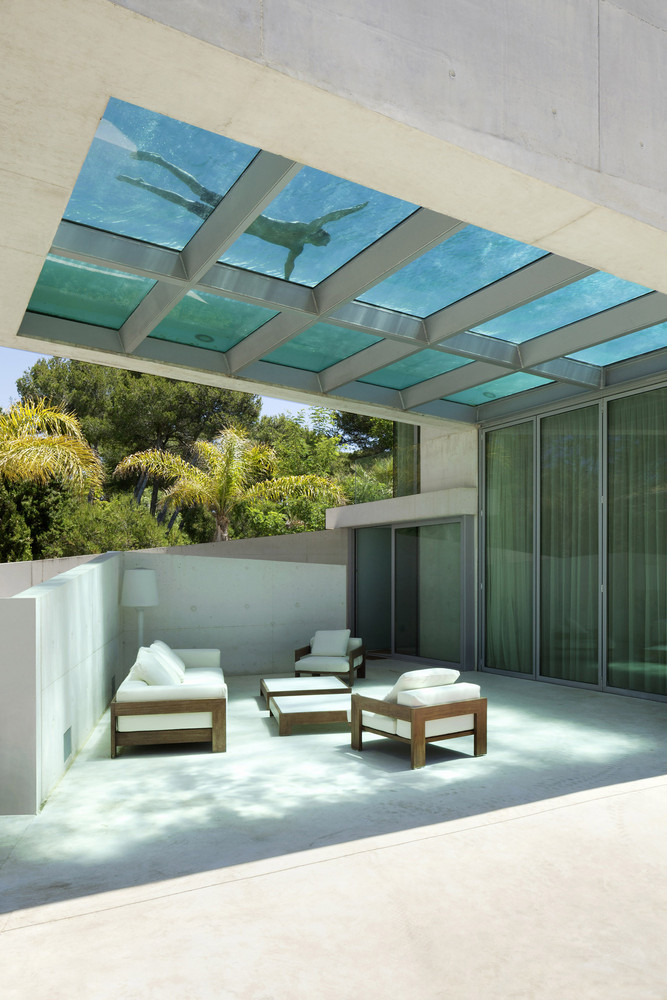
Jellyfish House / Wiel Arets Architects. Image @ Jan Bitter
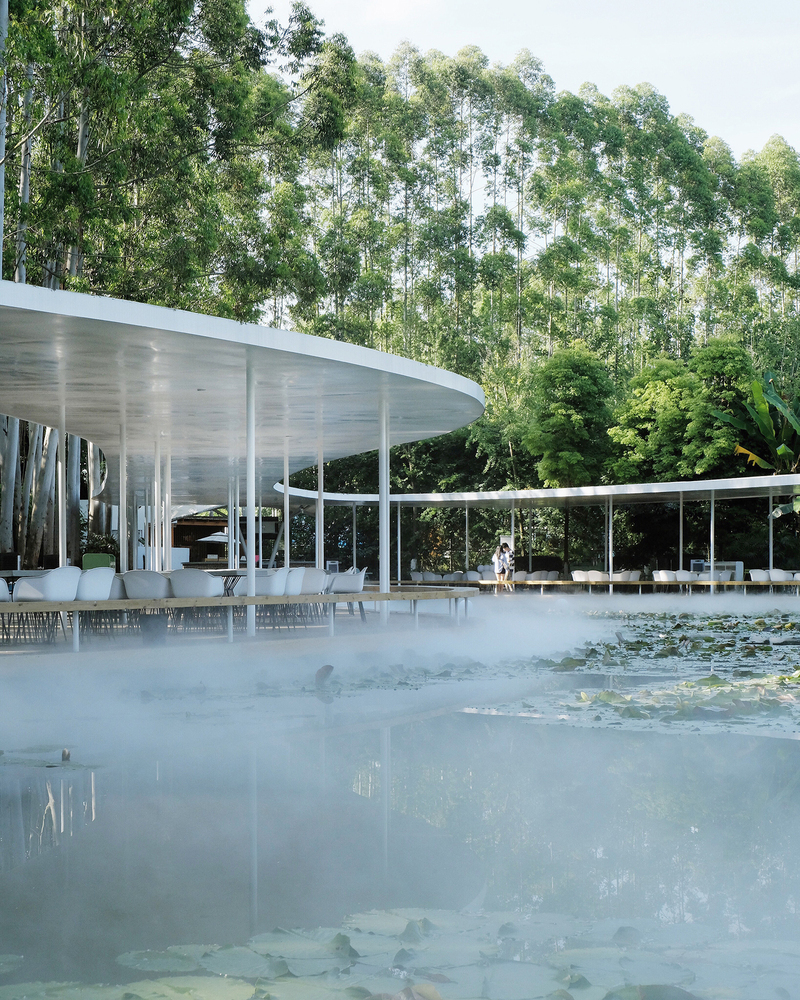
Garden Hotpot Restaurant / MUDA-Architects. Image @ Arch-Exist

Moses Bridge / RO&AD Architecten. Image @ RO&AD Architecten
Gilbert Houngbo, the chair of UN Water, believes in positive change. Houngbo states that positive change is possible if a shift happens towards nature-based solutions. Less steel and concrete constructions and more soil and trees. (Guardian, 2021). “Instead of damaging ecosystems, why not start creating them?” is what Professor Jacqueline McGlade says.
The growing demand for sustainable practices and management of world’s freshwater recourses has led to enormous potential to change industries and create a positive impact on the environment.
Building homes and skyscrapers with thousands of pounds of concrete, steel and other materials is a major contributor to pollution and energy use. The buildings and construction sector accounts for 39% of all energy-related CO2 emission in 2018 (UNEP, 2019). Homes and office building’s lightning, heating and cooling and poor insulation have a lasting impact on energy use and costs. Those buildings require larger amounts of power and water to keep comfortable. The building sector accounts for 35% of global resources. Society need new innovations on how to build houses, offices and skyscrapers. “Instead of net users, buildings need to become net producers” (Undecided, 2021).
Häyhä et al. (2016) build an ethical, biophysical and socioeconomic criteria on how the save operating space can be designed within three principles:
- Local boundaries based on the local environmental system (biophysical dimensions)
- Responsibility, capacity, equality and the right to sustainable development (equity-based principles)
- Reconsidering of consumption and production (socioeconomic dimension)
The natural environment of the Earth is turned into a constructed environment, and the infinite need to transform forest areas into grasslands for productive agricultural fields is surely growing (Stimers, 2020). Simultaneously, these activities and operations affect the lithosphere (land), hydrosphere (water) and atmosphere (air). Especially with the rising human population number by 2050. There is an increasing demand for architectures that shape spaces and characteristics of spaces that allows humans to create, innovate and play. Architecture has impacts on human lives, behavior, social interaction between people and communities. Humans are affected by the shape of spaces within building’s where people the ability have to learn, work, live and to create community (TED, 2015).
Winston Churchill stated in 1943, when he pondered about the restoration of the bombed House of Commons: “We shape our buildings and afterwards our buildings shape us” (BBC, 2017). Neuroscientists and psychologist have proven that geometry and certain constructions activated the hippocampal region in our brains. Shape of space affects human’s mood and well-being. A VR research shows that curved edges and rounded contours give people a better feeling in rooms than sharp-edged rectangular rooms (Shemesh et al.,2016). In another research, sensory shift got tested with walking by different facades. According to the wristband readings and on-the-spot emotion surveys, participants were highly positive affected if the façade is interesting and complex. Participants experience a negative emotion if the façade is monotonous and simple (BMW GUGGENHEIM LAB, 2013).
Pillars of Architecture
The relationship of humans to water should be reconstructed with new approaches, innovations and principles. Construction is a complex design and critical thinking is essential. Four pillars of architecture are designed to explore the context and relationships with water and humans.




TIME
Important is the understanding of how water appears and is manifested itself in several ways and several time periods of architectural history. Pollack (2020) questions the history of water to understand how to adapt constructions in the environment. “Settlements, residential bridges, water places, canals, and fountains when and how does water appear in the built environment?” The phenomenon of low tide, rising/decreasing water levels, droughts and floods also need to be considered.
MEANING
The presence of water is not only related to time. Psychological, sociological and cultural anthropological are aspects that needs to be considered and could influence the mood and well-being of people and communities. How does water could create a healthy-living space? Could the quality of architectural space be influenced with the presence of water?
DESIGN
The relationship between how the building environment is designed and the design of constructions are massive challenges. Pollack (2020) explains that in the build environment of water can be grouped into different criteria: state, behaviour and cyclical patterns. “The state of the water can be gaseous (steam, mist, fog), liquid (lake, river, waterfall, rain), solid (ice, iceberg, glacier, hail), and crystalline (snow, avalanche) should determine how the built environment is designed. The behaviour of water could also be grouped in different forms: wavy facades (sea, ocean), flowing spaces (steam, river), crystalline mass formation (ice, icebergs), or transparent structures (rain, waterfall)”. Challenges in design is depending on the geographical situation in the environment building. Locations like riverside, urban lakes, lakeside, coastlines, ocean-fronts, archipelagos, including residential bridges and water places, all have different approaches.
SPACE
Spatial connection systems are divided into macro environments and micro environments and depends on the scale of the intervention: urban scale, small scale, building complex scale. Near-water cities provide sustainable solutions when the need to change arise and they making water even more important (e.g., Amsterdam). River cities, water cities, lakeside cities, island cities and coastal cities are five sub-categories (figure 3). Think about Sweden, Venice, Cape Town, Hamburg, Amsterdam, St. Petersburg, New York. Micro environment is more focused on abstract environments as rocks, top of a mountain, on the shore or have a visual connection with water (figure 4).
Figure 3: Macro Environment
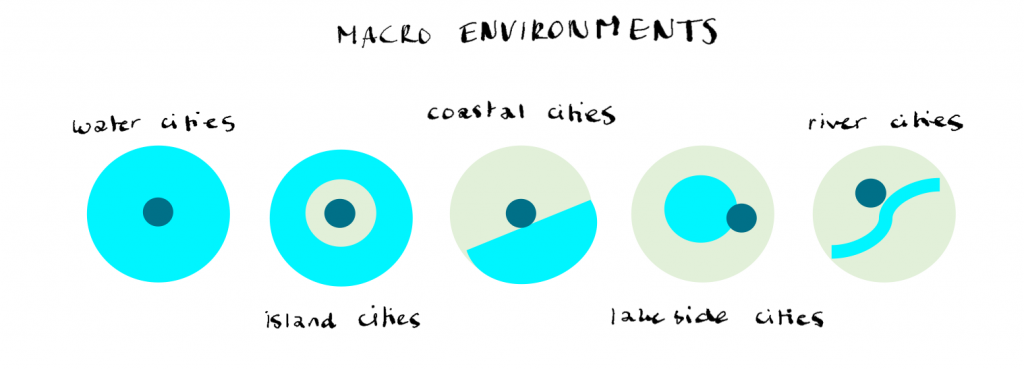
Figure 4: Micro Environment

An interesting concept for future research will be blue-green buildings.
References
(2021, June 18). Facing the problem of water scarcity. We Build Value. https://www.webuildvalue.com/en/megatrends/facing-the-problem-of-water-scarcity.html
Bond, M. (2021). The hidden ways that architecture affects how you feel. BBC Future. https://www.bbc.com/future/article/20170605-the-psychology-behind-your-citys-design
Bunsen Et Al., J. (Ed.). (2021). Planetary Boundries for Water. https://www.researchgate.net/publication/347785111_Planetary_boundaries_for_water_-_A_review
Cambridge Dictionary. (2021, July 7). Anthropocene definition: 1. the most recent period in the earth’s history, when human activities have a very important. . .. Learn more. Dictionary Cambridge. https://dictionary.cambridge.org/dictionary/english/anthropocene
Cao, L. (2020, January 1). Innovative Uses of Water in Architecture. ArchDaily. https://www.archdaily.com/931070/innovative-uses-of-water-in-architecture
Construction and operation of buildings account for almost 40% of the worldâs energy-related CO2 emissions. (2021, June 30). D+C. https://www.dandc.eu/en/article/construction-and-operation-buildings-account-almost-40-worlds-energy-related-co2-emissions#:%7E:text=The%20building%20sector%20plays%20a,third%20of%20energy%20consumption%20worldwide
Guggenheimlab. (2013). Testing BMW Guggenheim. http://cdn.bmwguggenheimlab.org/TESTING_TESTING_BMW_GUGGENHEIM_LAB_2013_2.pdf
Häyhä, T. (Ed.). (2018). Operationalising the concept of a safe operating space at the EU level – first steps and explorations. https://www.researchgate.net/publication/326655182_Operationalizing_the_concept_of_a_safe_operating_space_at_the_EU_level_-_first_steps_and_explorations
Heckenast, G. (2021). The impact of water in architectural thinking. AK Journals. https://akjournals.com/view/journals/606/16/1/article-p138.xml
How much of the ocean have we explored? (20121). Ocean Service. https://oceanservice.noaa.gov/facts/exploration.html
The Impact of Architecture | Donald Schmitt | TEDxUTSC. (2015, April 20). [Video]. YouTube. https://www.youtube.com/watch?v=HVsCHMj5_Bo
Rockström, J. (2009, November 18). Ecology and Society: Planetary Boundaries: Exploring the Safe Operating Space for Humanity. Ecology and Society. http://www.ecologyandsociety.org/vol14/iss2/art32/
Rockström, J. (2009, September 23). A safe operating space for humanity. Nature. https://www.nature.com/articles/461472a?error=cookies_not_supported&code=bf1009cc-cd78-45b6-860a-0917178eb75a
Stimers, M. (Ed.). (2020). Natural and Constructed Environments. https://www.researchgate.net/publication/341189247_Natural_and_Constructed_Environments
Taylor & Francis. (2017). Affective response to architecture – investigating human reaction to spaces with different geometry. https://www.tandfonline.com/doi/abs/10.1080/00038628.2016.1266597?journalCode=tasr20
The Global Education Project. (2021). fresh Water Resources Around the World – The Global Education Project. Http://Www.Theglobaleducationproject.Org/Earth/Fresh-Water. http://www.theglobaleducationproject.org/earth/fresh-water
UNEP. (2019). Global Status Report Building and Construction Sector. UNEP.Org. https://www.unep.org/resources/publication/2019-global-status-report-buildings-and-construction-sector
Water Scarcity | Threats | WWF. (2021). World Wildlife Fund. https://www.worldwildlife.org/threats/water-scarcity#:%7E:text=Billions%20of%20People%20Lack%20Water,may%20be%20facing%20water%20shortages.
Watts, J. (2020, October 15). Water shortages could affect 5bn people by 2050, UN report warns. The Guardian. https://www.theguardian.com/environment/2018/mar/19/water-shortages-could-affect-5bn-people-by-2050-un-report-warns